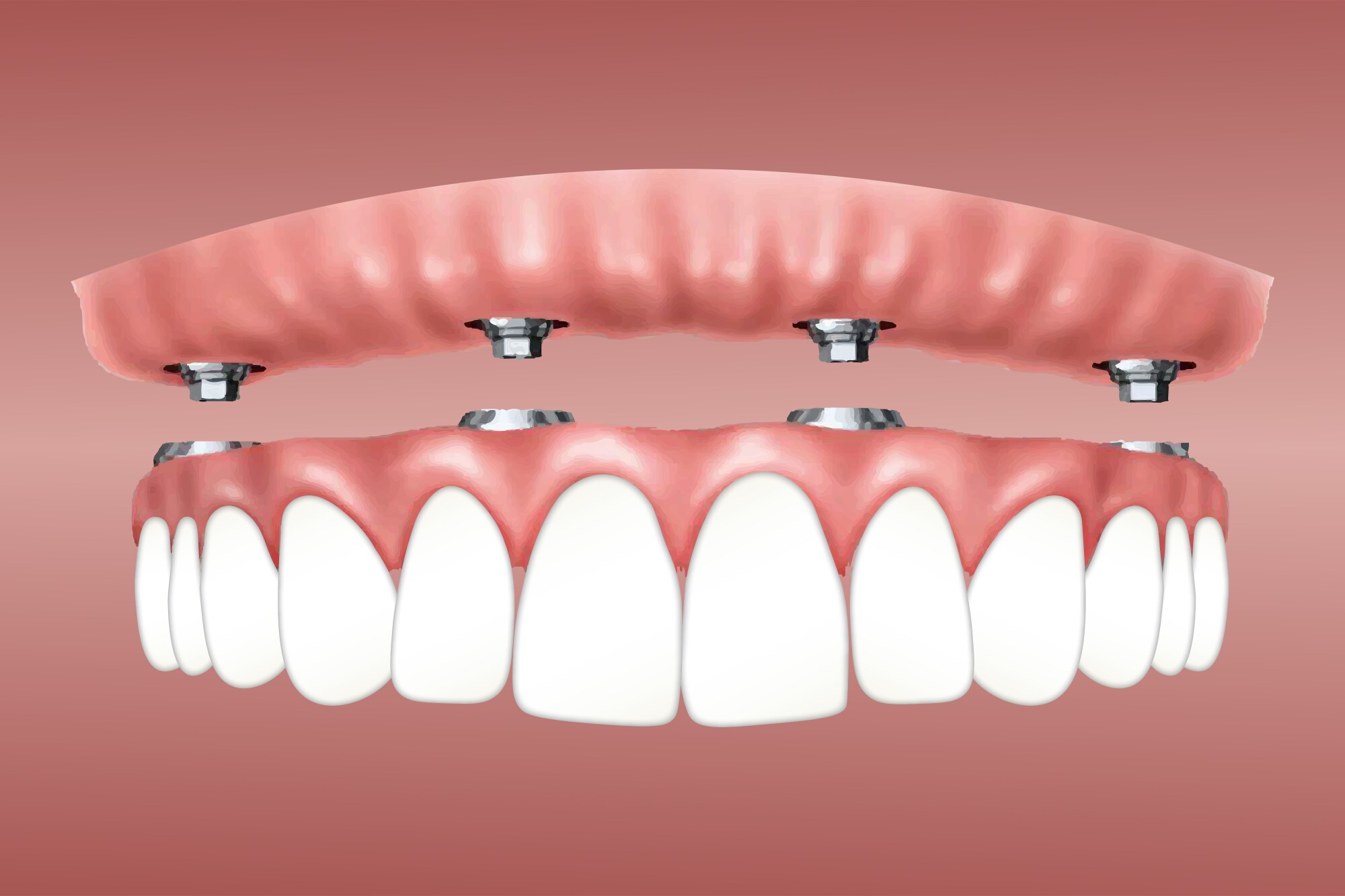A Biased View of Dental Sense
A Biased View of Dental Sense
Blog Article
What Does Dental Sense Do?
Table of ContentsRumored Buzz on Dental SenseDental Sense for BeginnersThings about Dental SenseDental Sense - An Overview
are clinical devices operatively implanted right into the jaw to bring back an individual's capacity to chew or their look. They offer assistance for synthetic (phony) teeth, such as crowns, bridges, or dentures. When a tooth is shed as a result of injury or condition, an individual can experience issues such as fast bone loss, defective speech, or modifications to chewing patterns that result in pain.Oral implant systems include an oral implant body and dental implant abutment and may likewise consist of a joint addiction screw. Dental implants. The dental implant body is operatively placed in the jawbone in location of the tooth's origin. The dental implant joint is generally affixed to the implant body by the joint addiction screw and extends through gums into the mouth to sustain the attached synthetic teeth
(https://pubhtml5.com/homepage/vtrmy/)Framework of The Dental Implant System choosing dental implants, speak with your oral copyright concerning the possible benefits and dangers, and whether you are a candidate for the treatment. Things to consider: Your general health and wellness is a crucial aspect in determining whether you are a great prospect for dental implants, the length of time it will certainly require to heal, and for how long the implant might stay in place.
Cigarette smoking may affect the healing procedure and reduce the lasting success of the implant. The healing procedure for the dental implant body might take a number of months or longer, throughout which time you normally have a short-lived joint instead of the tooth. the oral implant treatment: Thoroughly comply with the oral hygiene guidelines provided to you by your dental service provider.
Dental Sense for Dummies
Implant failure can cause the demand for another operation to deal with or change the dental implant system. Restores the ability to eat Restores cosmetic look Aids keep the jawbone from shrinking because of bone loss Protects the health and wellness of the surrounding bone and periodontals Aids maintain surrounding (nearby) teeth secure Enhances lifestyle Damages to surrounding natural teeth during dental implant placement Injury to the surrounding tissues throughout surgical treatment, such as sinus opening Injury during surgical procedure (as an example, fracture of surrounding jawbone) Insufficient function, such as feeling like the teeth do not bite with each other generally A feeling that the tooth is loose or turning in place arising from an abutment screw loosening Implant body failing (looseness of the implant body) as a result of systemic infection, which might be more most likely in clients with unchecked diabetes mellitus as a result of neighborhood infection in bone and gums supporting the dental implant body due to postponed healing, which might be extra likely in patients who view website smoke Problem cleaning up the gum tissues around the dental implant, leading to poor oral hygiene Untreated gum illness Post-surgical pins and needles due to nerve impingement or damage Constantly inform healthcare suppliers and imaging professionals that you have dental implants before any magnetic vibration imaging (MRI) or x-ray procedures.
FDA is not familiar with any type of damaging events reported for MRI or x-ray procedures with oral implants. Dental implants systems are typically made of materials that adhere to worldwide consensus criteria of the International Company for Standardization (ISO) or ASTM International. These standards have information of what makes a risk-free material.

An oral implant is a framework that changes a missing out on tooth. With screw-like tools, the surgeon inserts a dental implant into the jawbone, and it works as an anchor for a synthetic tooth, called a crown. A tool called a joint attaches the man-made tooth to the dental implant. The crown is personalized to fit the individual's mouth and match the color of their teeth.
The 9-Second Trick For Dental Sense
Some people are not qualified for oral implant surgical procedure. It is for oral doctors to operate people with: intense illnessuncontrollable metabolic diseasebone or soft cells condition or infectionIf these concerns are resolved, an individual can have the surgery. In, dental surgeons refrain from operating people with: If people with any one of the above undergo dental implant surgery, there is a greater risk of the dental implant failing.

Dental dental implant surgery is a tailored process. It's not the exact same for everyone. But the complying with gives a general introduction of what you can expect your dental professional, oral cosmetic surgeon, periodontist or prosthodontist to do: Put the implant operatively. Provide you time to heal. Attach the post and last crown, bridge or denture.
Next, your cosmetic surgeon will meticulously position the oral implant right into your jaw. If your implant is near the front of your mouth, your dental expert will make a momentary tooth for you to use up until you heal.
How Dental Sense can Save You Time, Stress, and Money.
During the recovery stage, your jawbone ought to fuse to the dental implant. This procedure can take anywhere from three to 9 months.
As soon as your dental implant heals, your dental expert can attach the abutment (little connector blog post) and your last repair (crown, bridge or denture). This usually takes regarding one hour to finish and may need a 2nd small surgical treatment. You shouldn't feel any type of pain during your dental implant treatment since your supplier will certainly make use of medication to numb your periodontals.
Report this page